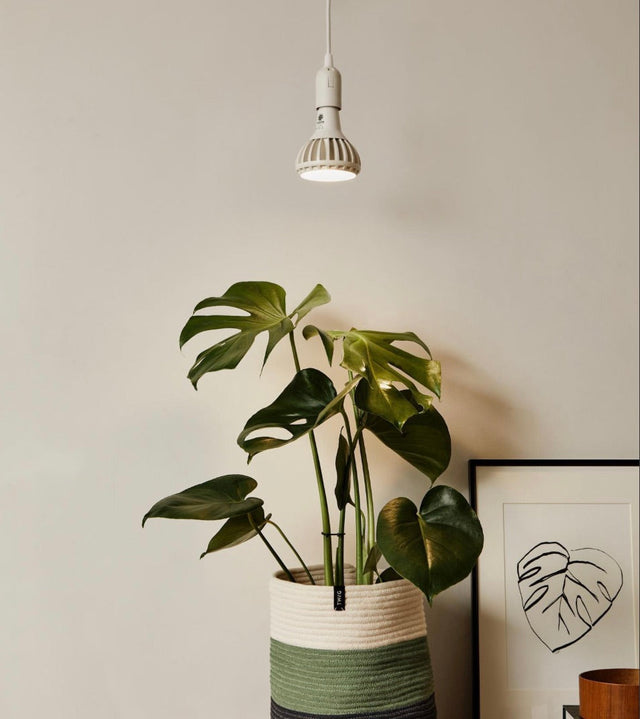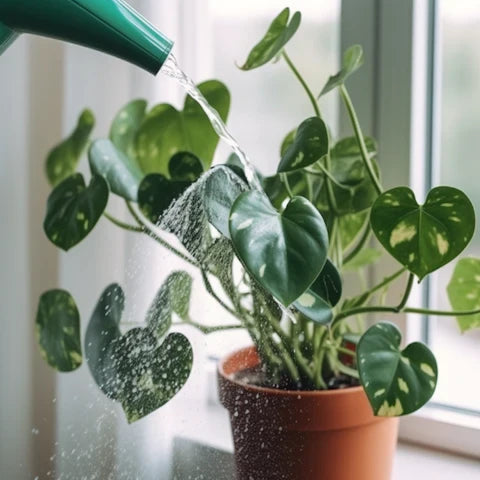Hey Gang, welcome to this comprehensive guide on grow light terminology. Get ready and become an expert, so what will we cover?
Section 1: Photosynthesis
Section 2: Lux versus PAR
Section 3: What is PAR, PPF and PPFD?
Section 4: What Is The Optimal Light Environment?
Photosynthesis
Photosynthesis is a fundamental process for plants, allowing them to convert light energy into chemical energy that can be used for various biological functions. This process occurs in the chloroplasts of plant cells, which are found in plants' green areas, such as leaves and stems. When light hits these parts of the plant, the chlorophyll pigments in the chloroplasts absorb the energy and convert it into sugars. These sugars are then used as a source of energy for the plant, driving various processes such as growth and reproduction. More on this topic.
The by-product of photosynthesis is oxygen, released into the atmosphere through tiny pores called stomata.
When growing plants indoors, providing them with the right amount and type of light is essential to stimulate and enable successful photosynthesis. However, the natural light available in a home or greenhouse may not be sufficient for many plants, especially during certain times of the year. This is why it is essential to consider the specific light requirements of the plants you are growing and to provide them with the right type and intensity of light.
Lux versus PAR
Understanding the difference between PAR and Lux is essential for optimizing plant growth.
Lux measures the total amount of visible light seen by humans and is typically used to measure light levels in indoor environments, while Photosynthetically Active Radiation, also known as PAR, is the range of light wavelengths most important for plants' photosynthesis. It is typically defined as the range of wavelengths from 400 to 700 nanometres.
What is PAR, PPF and PPFD?
Knowing the difference in these metrics are key to understanding how to compare grow lights and how much light to give your plant.
Photosynthetically Active Radiation, also known as PAR, is the range of light wavelengths most important for plants' photosynthesis.
PPF (Photosynthetic Photon Flux) is a measure of the number of photons (light particles) within the PAR range that are emitted from a grow light per second. It is measured in micromoles per second (µmol/s). It is a useful measure for directly comparing different grow lights, and understanding their total light output which is useful for plants
PPFD (photosynthetic Photon Flux Density), on the other hand, is the measure of the number of photons within the PAR range that fall on a given area per second. It is measured in micromoles per square meter per second (µmol/m²/s). PPFD is commonly used to measure the intensity of light reaching a specific point on a plant, and it is therefore the most useful measurement in determining whether a plant is receiving enough light.
PPF and PPFD both measure the amount of light useful for photosynthesis, but PPFD measures the density of light falling on a specific area, whereas PPF measures the overall amount of light emitted by a light source.
What Is The Optimal Light Environment?
So you want to optimise your indoor plants growth? Measuring light intensity and coverage is important and using a PAR/PPFD light meter can really help identify areas of low light intensity, allowing you to rearrange your plants or purchase additional grow lights.
There are several reliable light meter apps available for iPhone, such as Photone Grow Light Meter, which can be used to measure PPFD (Photosynthetic Photon Flux Density).
While good light coverage can result in increased growth and plant health, it is important to note that photosynthetic activity will reach a saturation point where additional light does not necessarily lead to a proportional increase in growth and plant health.
The perfect way to understand whether your plants receive enough light can be by using the Daily Light Integral calculator which uses the PPFD measurement and the number of hours each day.
The Daily Light Integral (DLI) is ideal to help you to understand whether you have sufficient light coverage. The DLI measures the total amount of light received by a plant over a 24-hour period, the ideal DLI varies depending on the type of plant, its growth stage, and the environment in which it is grown. Some plants require high DLI to thrive, while others require lower DLI. For example, plants like chillies, cactus and succulents that like a lot of light require a high DLI, and lower light plants like snake and prayer plants require a lower DLI.
Check out this handy calculator from Photone, it gives you recommendations on lighting levels: https://growlightmeter.com/calculator/
For more in-depth guides on light, check out these articles below:
Measuring light guide and tools
Find similar articles:
Lighting Science & MetricsMentioned in this article
More stories

How Close Should You Keep Your Pianta Grow Light to Your Plants?

